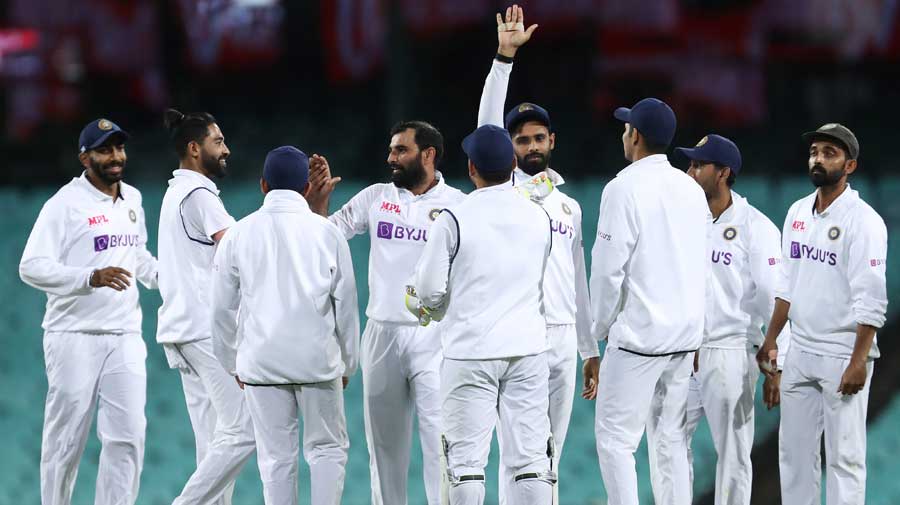The events that unfolded at the Adelaide Oval on Wednesday were in stark contrast to how India and Australia would have hoped to prepare themselves prior to such a high profile series opener.
There was an unusual flux in the home team’s dressing room, leaving captain Tim Paine to contemplate opening the innings with Joe Burns in the absence of an injured David Warner. At least half a dozen combinations have been speculated to open the innings in the past fortnight.
In an unusual yet not unprecedented episode, the Indians decided to announce their playing XI on the eve of the inaugural Day-Night Test between the two teams. Perhaps a glimpse of what Virat Kohli has described as ‘New India’.
Despite promise of bonhomie between the players, it will be unrealistic to expect that sparks won’t fly in the next four weeks given the intensity that the Border-Gavaskar Trophy has generated over the years.
The enduring attraction of hard-fought five-day cricket with all the twists and turns will be hard to beat and should be reflected in the excellent turnout and high interest that this tour has generated.
The Indian team management has tried to go one-up by throwing open their line-up less than 24 hours before the start. As the Indian captain said, “there’s going to be tension, stress, emotions flaring now and then” given the combativeness involved.
What though came as a surprise has been the team composition. Prithvi Shaw’s inclusion as Mayank Agarwal’s opening partner has been surprising given his form in the lead-up to the Test. While Wriddhiman Saha has been preferred over Rishabh Pant, Ravichandran Ashwin finding a berth is expected to open the debate over his usefulness in Day-Night Tests overseas.
Shaw had aggregated 98 runs in the two Tests in New Zealand, India’s last engagement, at an average of 24.5. He scored 0, 19, 40 and 3 in the two tour games and a worrying sign is his propensity to play too many shots. Both Sunil Gavaskar and Allan Border have expressed their displeasure over his loose shot selection and had instead preferred Shubman Gill as opener.
The think-tank has preferred continuity at the top hoping the flamboyant Shaw would act as the perfect foil to the composed Mayank. There’s no doubt India have gambled by picking Shaw in the XI. If he can set the momentum, it will help ease the pressure.
Similarly, Ashwin’s inclusion could backfire since the off-spinner hasn’t really earned success in his previous trips Down Under. Given the conditions in Day-Night encounters, a fourth seamer could have helped India’s cause.
Umesh Yadav had always been the front-runner to replace the injured Ishant Sharma. On his fourth tour to Australia, Umesh will be keen to cement his place alongside Jasprit Bumrah and Mohammed Shami.
Wriddhiman Saha hasn’t played an away Test since the one at Cape Town in 2018. Kohli’s preference for the more technically correct ’keeper must have been keeping in mind that the pink ball does a lot more, especially in the twilight session.
No visiting batting line-up has averaged more than 30 per wicket in these matches in Australia, and the Indians would do well to keep that in mind.
For once there is no debate over Cheteshwar Pujara or Ajinkya Rahane’s batting positions. Kohli though will be keen to leave his mark in his last engagement before going on parental leave.
Though the Australians have delayed naming their XI till the morning of the match, Cameron Green is all set to make his debut. The whole of Australia’s cricketing culture has been ecstatic about the all-rounder. “Really impressive for a guy of his age... He has got a smart cricket brain,” captain Paine said.
The uncertainty over Steve Smith’s participation has been blown away by his extensive net session on Wednesday and that is good news for the hosts. If Smith and Marnus Labuschagne get going, it will be tough for the Indian bowlers.
Australia have a 100 per cent record in Adelaide in the seven Day-Night Tests. This unsettled look in the Australian line-up will be India’s best chance to dent that enviable record.
Having won the series here in 2018-19, it will take a lot of character for India to retain the Border-Gavaskar Trophy this time around, highlighting the preparation and planning that underpinned that successful expedition.
Match starts: 9.30am (IST), live on Sony Six, Sony Ten 1, Sony Ten 3

Virat Kohli PTI
Through the ages
As India and Australia get ready for their first-ever Day-Night Test, here are some interesting facts on Tests involving the two countries over the years.
⦿ The first time Don Bradman appeared in a Test against India was in Brisbane, November 1947. He was 39 and dismissed ‘hit wicket’ off the bowling of Lala Amarnath, the only time he got out in this manner in his entire first-class career.
⦿ In the Brisbane Test in 1947, Vinoo Mankad was dismissed on the first ball of the innings off the bowling of Ray Lindwall. That was the first time an Indian batsman was dismissed off the first ball of a Test innings.
⦿ In the same Test, Australia’s left-arm pacer Ernie Toshack had figures of 5/2 off 19 balls. This remains the fewest runs conceded for a five-plus wicket haul by any bowler in Test cricket history.
⦿ Vinoo Mankad’s 116 in Melbourne was the first Test century for independent India. The previous four came for British-ruled India.
⦿ Richie Benaud’s bowling figures of 3/0 off 22 balls in Delhi in December 1960 made him the only Test bowler to take three or more wickets in an innings without conceding a run.
⦿ Jasu Patel’s 14 wickets (for 124 runs), including a 9-wicket haul (for 69) in the first innings of the Kanpur Test in December 1959, was then the best innings and match bowling figures for India in Tests. Despite these performances, Patel appeared in just two more Tests in the next six weeks while claiming five wickets for 203 runs in 70 overs.
⦿ In the Calcutta Test in January 1960, ML Jaisimha became the first Test batsman to bat on each day of a five-day Test match.
⦿ Both Pataudi senior and junior have the unique distinction of making the three-figure score on first attempt against Australia. Iftikhar Ali Khan Pataudi on debut for England made 102 at the SCG in December 1932. His son Mansur Ali Khan Pataudi made 128 not out in the Madras Test in October 1964, which was his first Test against them.
⦿ In the Mumbai Test match in October 1964, India successfully chased a target of 250-plus in the fourth innings for the first time. None of the 11 fifties made in this match was converted into a century.
⦿ ML Jaisimha, who landed in Australia just a few days prior to the Brisbane Test match in January 1968, made 74 and 101 in his first first-class appearance on Australian soil.
Mohandas Menon











